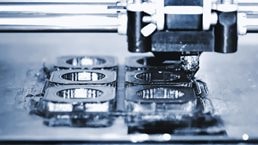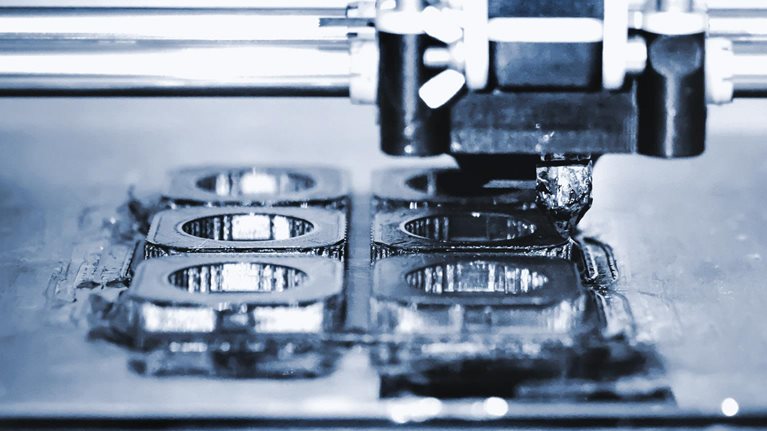Industrial companies around the world rely on digital tools to turn ideas into physical products for their customers. These tools have become increasingly more powerful, flexible, and sophisticated since the 1960s and 1970s, when computers first began replacing drawing boards in design offices. Today, product life-cycle management (PLM) has become engineers’ first language: PLM systems help companies to capture, codify, process, and communicate product knowledge across their organizations.
Yet as engineering tools have become more capable, the demands placed upon them have also increased. Product functions are increasingly delivered through a combination of hardware and software. Sensors and communications capabilities allow products to offer more features and to respond more effectively to changing operating conditions and user requirements. Advanced, adaptable user interfaces have simplified the operation of complex and sophisticated machines.
Evolving business models are also blurring the boundaries between design and use. Customers expect the performance and functionality of products to improve during their life cycle, enabled by over-the-air software updates or the ability to unlock new features as needed. Many products operate as part of an ecosystem of related products and services. Increasingly, customers are not buying products outright, but paying for the capabilities they provide on a per-use or subscription basis.
The birth of the digital twin
These changing requirements have triggered a transformation in digital product representation and the creation of a new tool: the digital twin. Digital twins combine and build upon existing digital engineering tools, incorporating additional data sources, adding advanced simulation and analytics capabilities, and establishing links to live data generated during the product’s manufacture and use. A conventional PLM system uses one digital model to represent each variant of a product. A digital twin, by contrast, may have one model for each individual product, which is continually updated using data collected during the product’s life cycle.
The digital-twin approach can be applied to products, manufacturing processes, or even entire value chains. In this article, we will focus on their application to products, specifically to product design.
Digital twins offer multiple potential benefits for product-based companies and users. They can aid design optimization, reduce costs and time to market, and accelerate the organization’s response to new customer needs. Digital twins can also be a critical enabler of new revenue streams, such as remote maintenance and support offerings and “as a service” business models.
Based on the experience of companies that have already adopted the approach, we estimate that digital-twin technologies can drive a revenue increase of up to 10 percent, accelerate time to market by as much as 50 percent, and improve product quality by up to 25 percent. Digital-twin technology is becoming a significant industry. Current estimates indicate that the market for digital twins in Europe alone will be around €7 billion by 2025, with an annual growth rate of 30 to 45 percent.1
Digital twins in practice
Companies in many different industries are already capturing real value by applying digital twins to product development, manufacturing, and through-life support (exhibit).

An automotive OEM, for example, has used the digital-twin approach to create a concept configurator for early phase development. The start of the development process is especially challenging for complex products because the various stakeholder groups, such as sales, engineering, and finance, may have different or even contradictory product requirements. The OEM now balances these trade-offs using a digital concept configurator that allows for simultaneous evaluation of customer requirements, technical concepts, and product costs. When a technical concept within a system or subsystem of the product is changed, the implications for meeting customer requirements or product cost targets become immediately transparent.
Would you like to learn more about our work in Product Digital Twins?
Using the configurator within cross-functional development teams has helped the OEM to reallocate 5 to 15 percent of a new vehicle’s material costs to the attributes that drive the most customer value. Applying the approach to select customer-facing components has allowed the company to optimize costs and customer value simultaneously, improving the contribution margin of those parts by 5 to 10 percent. As a further benefit, the configurator helped the team reduce the time taken to reach agreement on changes by 20 percent, thus accelerating time to market.
Digital twins are even being used to replicate systems in complex mission scenarios. Using this approach, one aerospace and defense player has cut the time required to develop advanced products by 30 to 40 percent. The digital twin also aids discussion with customers during the development process, helping the company validate and improve its designs.
In the consumer electronics sector, a company is using product digital twins to boost quality and supply chain resilience. It stores detailed information on the content of its products, including the exact source of individual components. In the event of quality issues during production or early failures in the field, the company can trace problems back to specific supplier facilities, then take appropriate action to prevent reoccurrence of the issue. An automotive supplier uses the same approach to trace quality deviations in its production through to the upstream supply chain, and in the process has reduced scrap by 20 percent.
Digital twins are increasingly being used to improve future product generations. An electric-vehicle (EV) manufacturer, for example, uses live data from more than 80 sensors to track energy consumption under different driving regimes and in varying weather conditions. Analysis of that data allows it to upgrade its vehicle control software, with some updates introduced into new vehicles and others delivered over the air to existing customers.
Developers of autonomous-driving systems, meanwhile, are increasingly developing their technology in virtual environments. The training and validation of algorithms in a simulated environment is safer and cheaper than real-world tests. Moreover, the ability to run numerous simulations in parallel has accelerated the testing process by more than 10,000 times. Incorporating sensor data from real-world vehicles into these tests helps companies improve the veracity of their simulations and identify blind spots in the virtual test database.

The mainstreaming of additive manufacturing
A company in the renewable-energy sector is using a digital twin to automate, accelerate, and improve the engineering of hydroelectric turbines. Using the machine learning system to evaluate the likely performance of the new designs allowed it to rate more than a million different designs in seconds rather than the hours required for conventional computational flow dynamics (CFD) analysis. The winning geometry delivers the maximum theoretical performance, significantly higher than what is achievable by conventional optimization methods. Moreover, by using machine learning, the overall end-to-end design cycle time was cut in half compared with the conventional approach.
Companies in other sectors are also starting to use digital twins to derive deeper insights into customer behaviors and preferences. For example, white-goods manufacturers can use data from in-service products to identify the most and least used features. That can inform future product development decisions, such as deleting rarely used features or revising the user interface to make the features more accessible.
The adoption of digital twins is currently gaining momentum across industries, as companies aim to reap the benefits of various types of digital twins. Given the many different shapes and forms of digital twins (see sidebar, “Digital twins in three dimensions”), and the different starting points of each organization, a clear strategy is needed to help prioritize where to focus digital-twin development and what steps to take to capture the most value.
How to start and succeed on your digital-twin journey
Embarking on a digital-twin journey can look daunting at first sight, especially since the breadth and depth of use cases can span the entire corporate landscape, including product portfolio choices, business model design, R&D, manufacturing, and through-life support.
This versatility can also be a strength, however, as it allows companies to start small and expand the scope, sophistication, and value-chain coverage of their digital-twin projects over time. The experience of companies that have applied digital twins in their own product operations leads to a few simple rules that can greatly increase your odds of success.
Define your aspirations
Be aware of digital-twin best practices. Do your homework and seek out perspectives on best practices and future trends in digital-twin technology. Assess and prioritize the elements of your vision. Evaluate the potential of digital-twin-related opportunities and prioritize them into an implementation road map.
Be clear about the business case. Quantify the value offered by different digital-twin opportunities and determine the minimum level of model sophistication required to generate that value. Successful projects focus on short development times and rapid ROI.
Test the waters by prototyping select use cases. Run a series of hackathons (possibly supported by digital-twin specialists) to assess your capabilities’ baseline, develop solution prototypes, refine, and adjust the initial concepts. This step calibrates the approach and prevents you from losing time and resources by attempting an impossible plan. It is part of a broader value assurance move aimed at bringing the entire project to a successful conclusion.
Know your strengths
Perform a maturity assessment. Understand your current digital product development capabilities along six main dimensions: development methodologies, PLM governance, data strategy, business processes, system complexity, and collaboration. Understanding the areas where you are most advanced and where you are lagging behind will help prioritize areas of investment for a balanced implementation of a digital twin and its use cases.
Access to appropriate talent and capabilities can make or break a digital-twin initiative. Many organizations need to develop additional expertise in areas such as advanced simulation and modeling or data analytics for user experience design.
Plan a step-by-step, agile implementation
Invest several months in developing a minimum viable product (MVP). Incubate a cross-functional, agile team dedicated to bringing priority use cases to life and building digital capabilities in the process. The MVP is now the must-do approach to maximize value gains from the start rather than waiting until the program is finalized before experiencing the first benefits.
Perform an MVP retrospective to pivot or persevere. Derive lessons from the first MVP phase to confirm your digital-twin aspirations or pivot them based on the findings (for example, the validity of use cases, complexity of implementation, and maturity of the organization). This is the second value assurance move that enables you to further calibrate the implementation plan and revise the scope to avoid generating sunk costs.
Scale up the digital-twin initiative and accelerate ROI. Optimize and standardize implementation based on insights from the MVP phase. Define an (internal or external) recruiting and capability-building strategy. Build an operating model to enable rapid scaling of successful approaches. The most advanced organizations typically consider digital-twin technologies a core strategic capability.
By following these simple best practices, you will be able to reap the benefits of digital twins in a scalable, progressive way. Are you ready?



